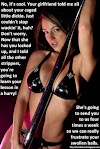Double-processed bleached-blond hair has been trending for a while, and, for me at least, it never really goes out of style. I’ve been in an on-again, off-again relationship with bleached-out hair since 2008—mostly because it makes me feel kind of badass.
I am willing to concede, however, that it’s the bad boyfriend of hair coloring. You wanted it because it looked cool, but, man, did it turn out to be needy, swallowing up your time (in the salon) and your disposable income (so many products) with abandon. Most people give it up quickly, but not me. I keep coming back for more.
Through trial and error and what feels like millions (maybe even zillions) of dollars literally washed down the drain, I’ve learned how best to take care of it and which products actually work.
Then, earlier this year, after everything I’ve learned, I did something stupid—the backslide to end all backslides, if you will. In a fit of impetuousness, spurred on by wanting—no, needing—to feel better about myself, coupled with a freelancer’s seesawing finances, I let a salon student color my hair. “What’s the worst that could happen?” I thought. (I think we all know how this one ends.)
Yup. They burned my hair off. Not all of it (silver lining?), but everything within a two-inch radius of my head was ruined. For perspective, I have a chin-length bob. This sent me on a hair-care journey like never before. You name it, I’ve tried it. I’ve journeyed to the depths of hair hell, peeked inside, been quite literally burned, and now I’m back from the brink of (hair) destruction and ready to tell the story.
You’re probably thinking, “Why should I listen to the girl who let someone burn her hair off?” And my answer is that of a wizened groupie. I’ve seen things…I know things…let me share what I’ve learned.
The Conditioner Hierarchy: Upon bleaching your hair, you’ll find out that conditioner is not just your new best friend—it’s your whole crew. You’ll need at least two but ideally three different conditioners, because conditioner is now your shampoo, and a treatment mask is now your conditioner. Does that make sense? Let’s take it step by step.
1. Conditioner Is Your New Shampoo!
You won’t see this tip elsewhere, but this is the one that will save you. Wash your hair with conditioner alone—no shampoo, just conditioner. “But I work out!” I hear you say. And I applaud your efforts. Every day, sweat or no, rinse your hair thoroughly with water, then just condition it. It will still smell nice and look better for it. An inexpensive conditioner will work for this. Alba Botanica has good conditioners for a fair price, but almost anything will do. This is not the conditioner to use after you eventually do shampoo. That should be a mask. Got it? Good.
2. The Mask as Conditioner:
The good news is that this step is pretty self-explanatory. The bad news is that, after years of experimentation, I still haven’t found a mask under $20 that actually works. It’s the one product you need where you simply have to dish out the dollars. Look for something that says “repair” in its description. At the moment, I’m into Sachajuan Hair Repair, or, if you like natural, Rahua conditioners are also great.
3. Vitamins:
There is an entire market dedicated to hair and skin vitamins, but here’s my honest advice: Don’t bother. They’re mostly bullshit, and there’s always one reviewer saying it made them grow hair all over like a chimpanzee. Um. No, thanks. But, if you must, prenatal vitamins are the way to go—they’re more likely to have been researched thoroughly, and they’re designed to make you healthy from the inside out.
4. Did I Mention Conditioner?
This time it’s the purple or silver variety. There are myriad purple shampoos out there, but most of them are cheap and harsh. Rotate a purple-tinted conditioner into your regimen about once a week to reduce brassiness. The Shimmer Lights conditioner isn’t moisturizing enough on its own, but it’s super purple, so mix a little into your mask, and presto! If you’re feeling fancy, Davines is always a great option.
5. Protein Treatments:
Maintaining double-processed hair means a balance of protein (for strength) and moisture. But my advice is leave protein treatments to the professionals. Trying to do your own protein treatment is a fruitless exercise. It either doesn’t penetrate, or you’ll add too much protein and your hair becomes brittle and snaps anyway. Spring for the professional treatment when you get your hair colored, and ask your hairdresser about Olaplex, which treats your hair while it’s being colored. It’s available on Amazon, but what did I just say about leaving the protein treatments to the professionals? Step back.
6. Heat Styling and Leave-In Treatments
Under no circumstances should you heat-style your hair without first applying a heat-activated treatment to your damp hair. Bumble and bumble does a nice one. For me, other leave-in treatments or conditioners aren’t worth it other than to smooth flyaways.
7. Grease Is Good: Finally the Shampoo
You can let white-blond hair get pretty greasy before anyone besides you notices. But eventually you will want to shampoo it. Try to do it once a week, and before you do, add more grease. Use coconut, argan, olive, any oil at all, and let it sit in your hair for as long as you can before getting in the shower to shampoo. I’d say use a gentle or repairing shampoo, but, to be honest, most shampoos are similar, so just do you on this one, but ideally look for one that's sulfate-free or at the very least not “clarifying”—a friendly way of saying drying AF.
Want more stories like this?
14 Shag Haircuts We’re Copying Immediately
The Truth About Silicone-Based Hair Products
Oribe Debuts Its First Product Line for Natural & Textured Hair





0 Yorumlar